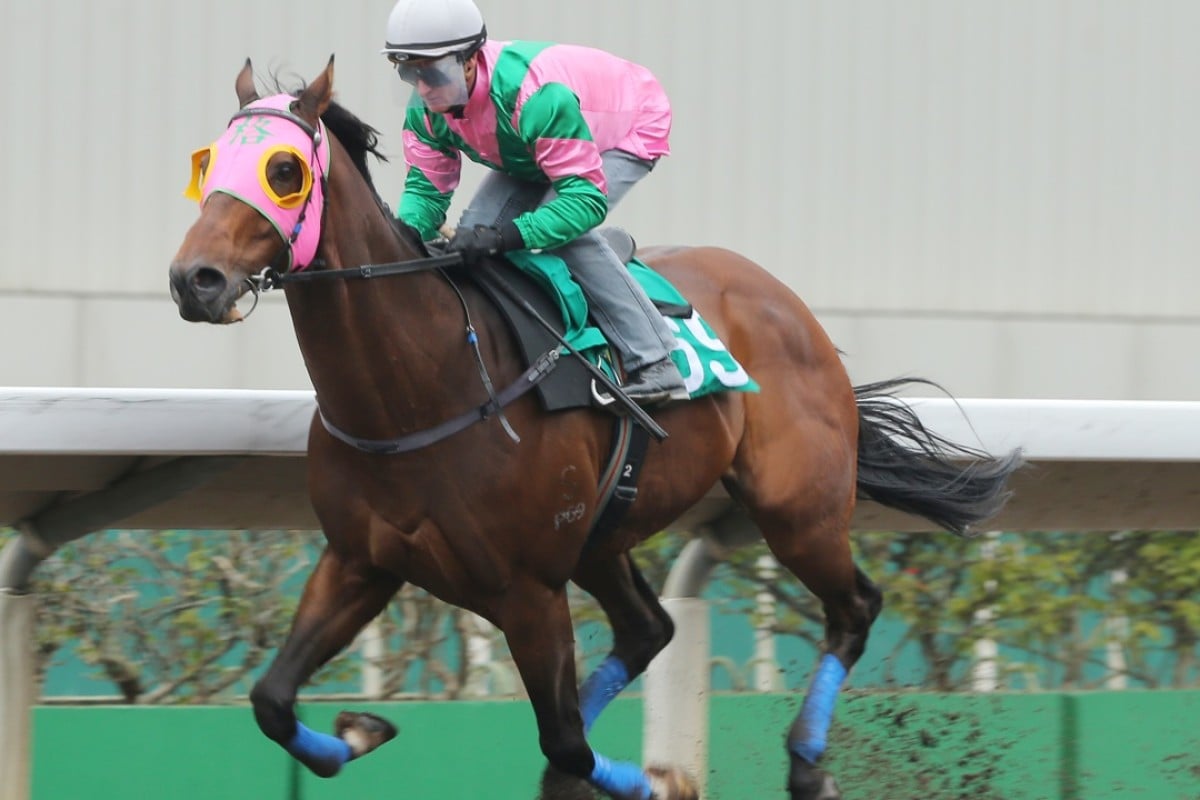Heart irregularities remain a mystery of modern racing and two high-profile horses – Luger and Aerovelocity – head into the Group One features at Sha Tin on Sunday coming off last-start failures due to the issue, their trainers left with little more to do than hope for the best.
For Luger, John Size’s brilliant 2015 BMW Hong Kong Derby winner, the stakes are high in the Group One Stewards’ Cup: another instance of atrial fibrillation, the scientific name for the heart irregularity the five-year-old has now suffered twice, would mean compulsory retirement.
Size said that no amount of sourcing expert opinion or studying research has him any closer to offering a reason for the ailment.
“I have no insight into it. I’ve had discussions with people of course, but no one seems to profess to know the cause,” he said of the condition that causes horses to capitulate alarmingly during a race.
There are some speculative theories as to what might cause the atrial chamber in an otherwise healthy horse’s heart to begin beating out of rhythm, ranging from electrolyte imbalance to horses with larger hearts being more predisposed to the problem.
 Luger (Zac Purton) wins the 2015 BMW Hong Kong Derby.
Luger (Zac Purton) wins the 2015 BMW Hong Kong Derby.
Despite what seems like a spate of the condition in recent times, Size said it was unlikely to be a new phenomena caused by modern feed or training techniques.
“The difference is technology,” he said. “Back in the old days a horse running tailed-off last was just a ‘bad run’.
“We didn’t have a way to diagnose heart irregularities, and that goes for a whole range of things we can detect and diagnose today.”
 John Size is at a loss to explain heart irregularities, like everyone else.
John Size is at a loss to explain heart irregularities, like everyone else.
What is certain, the effect of a heart irregularity on performance is profound, and an immediate return to form can be equally unpredictable.
“It’s a grey area,” said Aerovelocity’s trainer, Paul O’Sullivan. “They can have it happen once in their life, or they can do it repeatedly.
“They can run a shocking race and then come back and be good as gold,” added O’Sullivan, who is hoping for the latter outcome when Aerovelocity resumes in the Group One Centenary Sprint Cup. It will be the reigning Sprinter of the Year’s first run since finishing a tailed-off last in November’s Jockey Club Sprint.
 Aerovelocity (Zac Purton) wins the 2015 KrisFlyer International Sprint at Kranji in Singapore.
Aerovelocity (Zac Purton) wins the 2015 KrisFlyer International Sprint at Kranji in Singapore.
Both O’Sullivan and Size said they hadn’t trained their horses any differently but they have monitored heart rates during trackwork and trials using a 250g electrocardiogram (ECG) fitted under the saddle.
The data collected could contribute to a solution one day, but at this stage technology does little more than provide some assurance the condition doesn’t happen in the morning.
 Paul O'Sullivan is hoping the old healthy Aerovelocity shows up on Sunday.
Paul O'Sullivan is hoping the old healthy Aerovelocity shows up on Sunday.
Unfortunately for Size, and Luger, it is thought that a horse that suffers a heart irregularity is more likely to suffer another.
“We don’t know how good he is and we might never know,” said Size of a brilliant horse that has won seven races from 11 starts. “A horse has to have a career to find out how good he is, and he might not have one.”
Zac Purton rides both horses on Sunday and said he won’t be riding any differently because of vet reports.
“I will just ride as I would any other race, but of course they are both very good horses,” he said.
“If you go back to before those last-start failures they have run a career-best, Aerovelocity in Singapore and Luger when he won the Derby.”





















